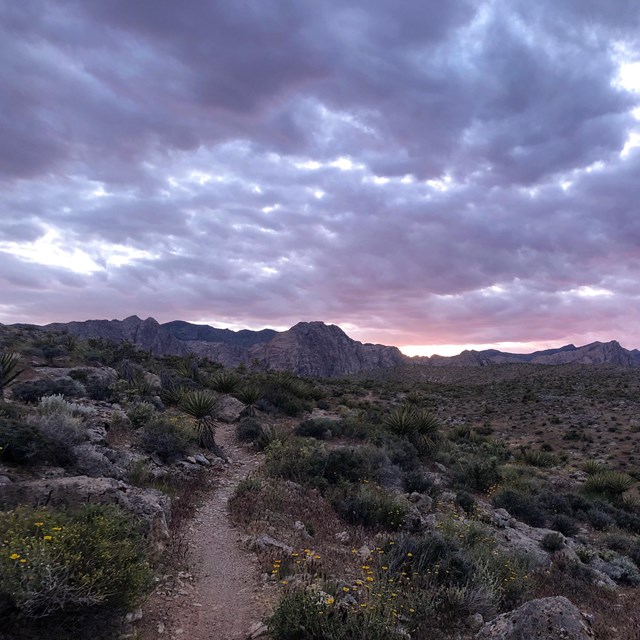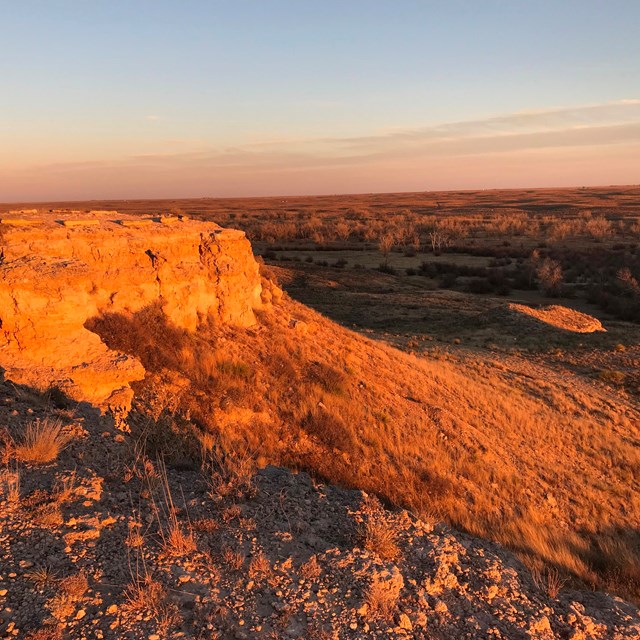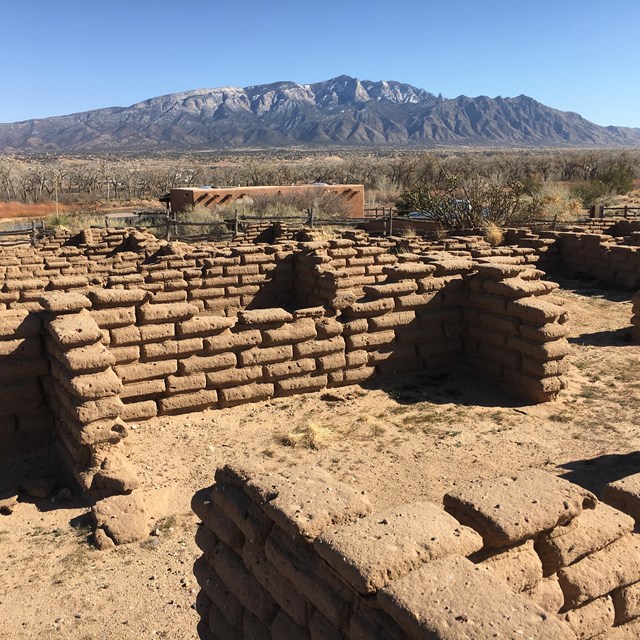Last updated: December 15, 2021
Article
Luminaria Traditions
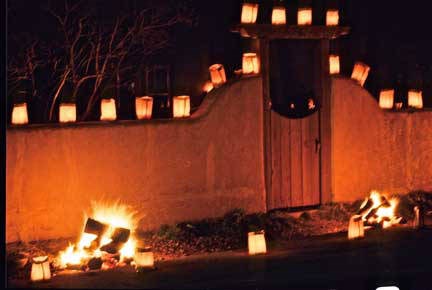
Photo/Jack Parsons
“As the natural darkness of night sets in, the whole city and suburbs around light up with a blaze of light.” - The Weekly New Mexican, January 2, 1864.
Every December, plazas, churches, homes, and businesses across New Mexico are lit up with luminarias, (or farolitos as they are known in Northern, New Mexico.) In Spanish, luminaria means “illumination” and farolito means "little lantern." These decorative winter holiday lanterns are made with brown paper bags, which are filled partway with sand and a lit tea candle or small votive. Once lit and set, luminarias glow with a unique warmth that is unmatched throughout the year.
Luminarias weren't always contained in brown paper bags, though. Before the square-bottomed paper bag was patented in 1872, small stacks of Piñon bark and dry wood were made, and the small bonfires were lit along roadways. This is where the controversy around the names arises. North of Santa Fe, “farolito” is the name for the paper lantern and “luminaria” is the small stacks of firewood, while south of Santa Fe, New Mexicans call the paper lanterns “luminarias.”
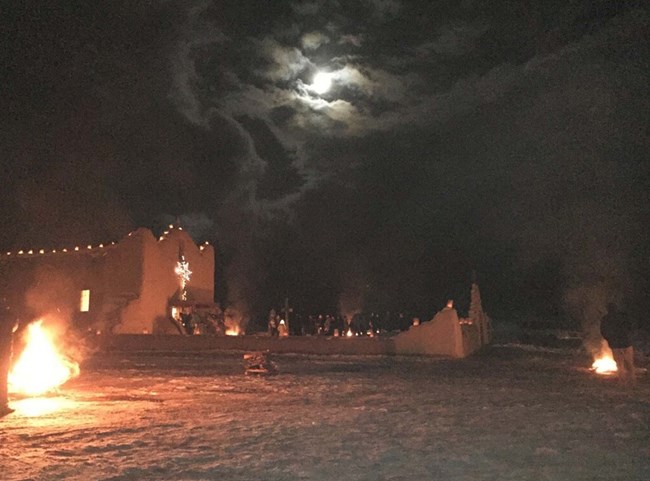
Photo/Picuris Pueblo
The luminaria tradition of the Rio Grande Valley may have originated in 1590 when small bonfires were lit by Gaspar Castano de Sosa’s men to guide a scout back to their camp. Pueblos picked up luminaria traditions during Spanish colonization. Some of those traditions are still practiced today. The Picuris Pueblo has a torchlight precession and perform traditional dances on Christmas Eve. Acoma Pueblo lines the road into the Pueblo with over two thousand luminarias every year. In New Mexican Catholic traditions, luminarias and farolitos were only lit on Christmas Eve to symbolically guide the Holy Family on their journey.
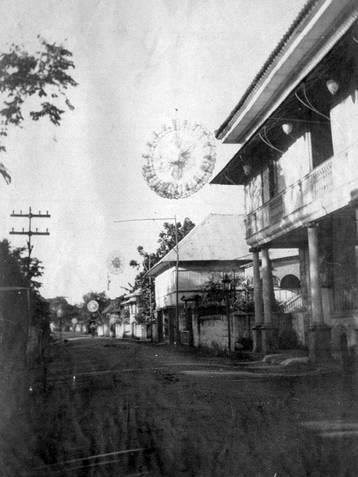
Photo/WikiCommons
Luminaria traditions have spread to many of the former Spanish territories. The Winter Solstice is the darkest time of year, so lights and lanterns have been incorporated into winter holiday traditions for hundreds of years. Luminaria traditions are often a part of religious ceremonies and celebrations like Simbang Gabi in the Philippines, or Las Posadas and Day of the Virgin of Guadalupe in Catholic communities across Latin America and Spain. A common thread between these lantern traditions is the influence of Spanish colonization and the Spanish attempt to blend Roman Catholic traditions of Christmas into local cultures and winter traditions.
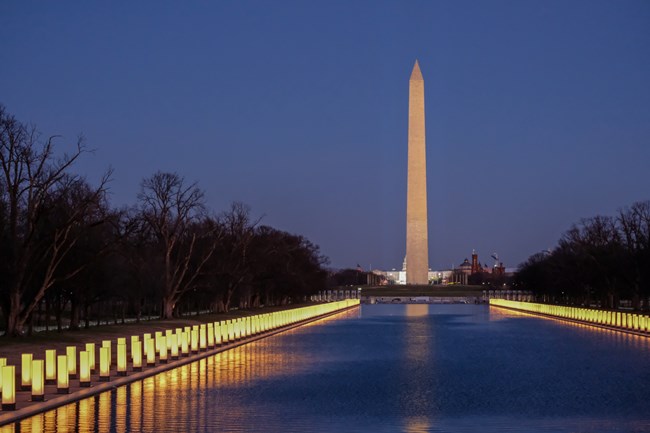
NPS Photo
Luminaria use in the United States is not limited to New Mexico, or exclusively to winter holiday celebrations. On January 19, 2021, President-elect Biden held a memorial ceremony at the Reflecting Pool near the Lincoln Memorial in Washington D.C. Four hundred luminarias were lit to represent the 400,000 Americans who lost their lives in the first twelve months of the global pandemic. The American Cancer Society uses luminarias to honor people who have died, are currently fighting, or recovered from cancer. They sell memorial luminarias to fundraise for their organization and cancer research.
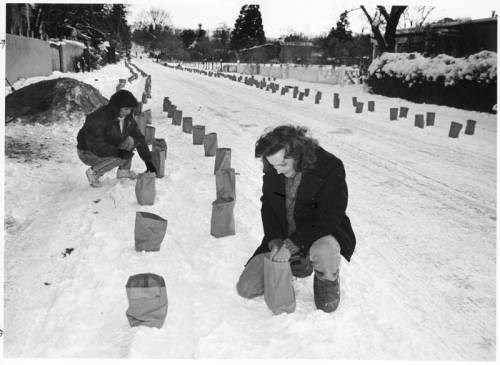
Photo/Palace of the Governors Archive
Sources and Additional Information:
-
Anaya, Rudolfo “The Farolitos of Christmas” 1995. Museum of New Mexico Press.
- Fletcher, Sophia “Hanging of the Greens” University of New Mexico. Accessed December 9, 2021.
- Flint, Richard and Cushing Flint, Shirley. “Gaspar Castano de Sosa” New Mexico History State Records Center and Archives.
- Greene, Bizia “Holiday charm of farolitos started in the Philippines” Santa Fe New Mexican December 27, 2014. Accessed December 9, 2021.
- Nelson, Kate. “Legend of the Luminarias (Uh...Farolitos)” New Mexico History Museum December 21, 2014. Accessed December 9, 2021.
-
“Las Posadas” Encyclopedia Britannica Accessed December 9, 2021.
- “Luminarias” Visit Albuquerque. Accessed December 9, 2021.
- “Parol: A Symbol of Filipino Christmas Spirit” The Mixed Culture December 15, 2013. Accessed December 14, 2021.
- Picuris Pueblo, Accessed December 9, 2021.
- “Pueblo Christmas Celebrations” New Mexico Tourism Accessed December 9, 2021.
-
Willson, Chris. The Myth of Santa Fe: Creating a Modern Regional Tradition, (UNM Press 1997). Pg. 182. Accessed December 9, 2021.
Tags
- el camino real de tierra adentro national historic trail
- old spanish national historic trail
- santa fe national historic trail
- old spanish national historic trail
- santa fe nht
- santa fe national historic trail
- el camino real de tierra adentro national historic trail
- el camino real de tierra adentro nht


